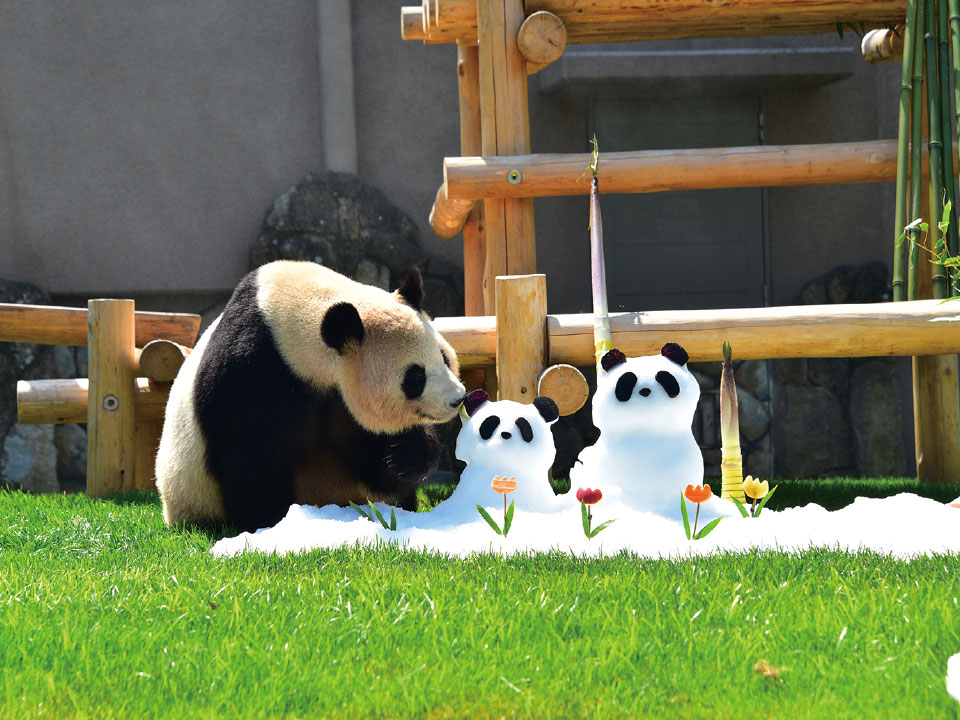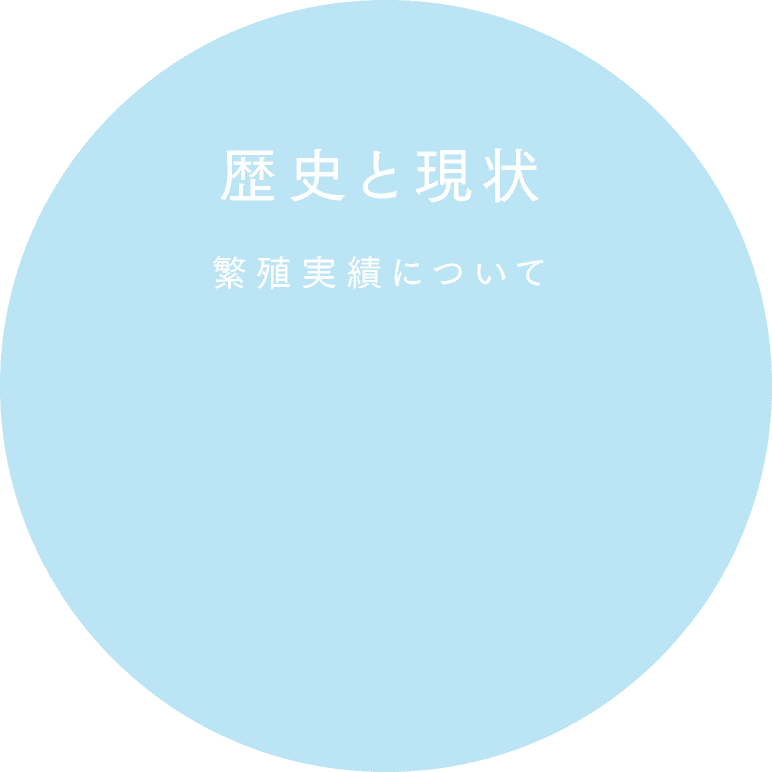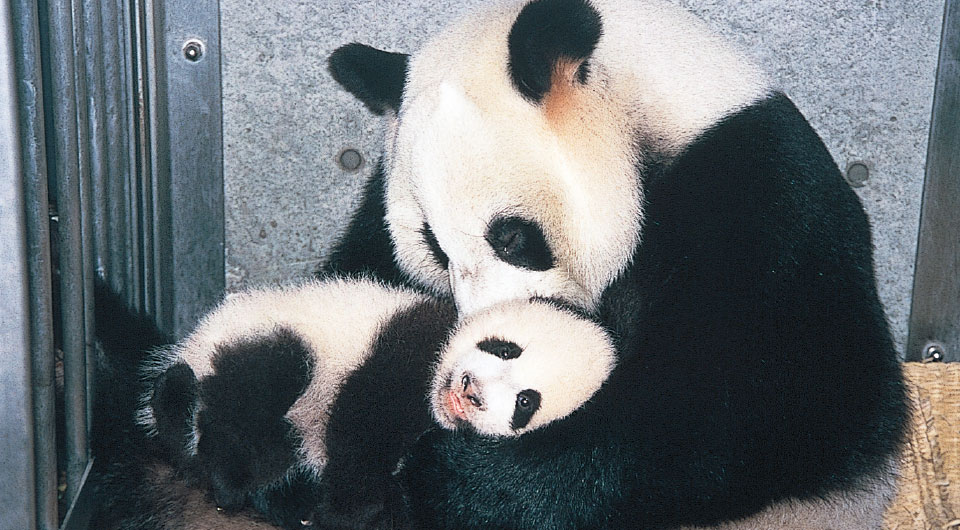

First baby born in Japan in 12 years
- Natural reproduction is a top priority.
- The Joint Project for Giant Panda Conservation places the highest priority on natural reproduction in a captive environment. We create an environment for natural reproduction, observe behavioral and physical changes, and measure hormones to determine when males and females are in estrus and when it is the right time for mating. We give priority to natural reproduction, but we also use artificial insemination only in cases of infrequent mating or when the male loses interest in the female, despite the fact that she is still in estrus.
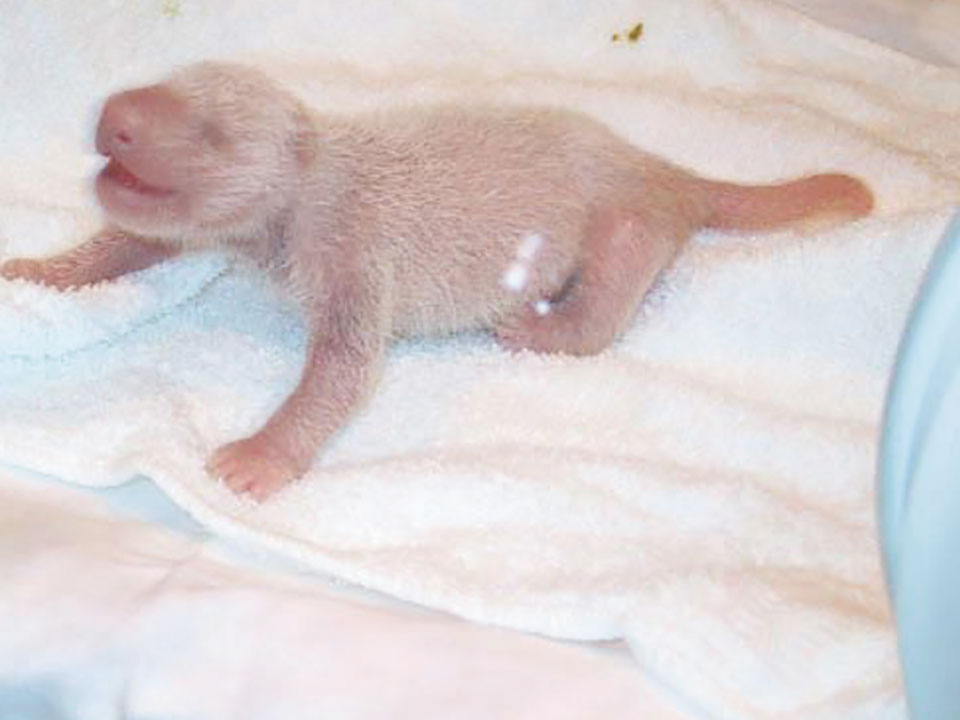
- Pregnancy and delivery of "Ume-ume" by artificial insemination
- Mei Mei" was bred for the first time at the Chengdu Giant Panda Breeding Research Base in 1999 at the age of 5, and raised two cubs. This was the first birth of a baby panda in Japan in 12 years, since the birth of a panda at the Ueno Zoo in 1988.
Start and Results of Breeding Research
- Yongming" & "Plum Plum" pair gave birth to 8 cows 4 times
- Full-scale breeding research began in 2001, and in late August 2001, the first signs of estrus were observed in Plum Plum, which triggered breeding behavior in Eimei, leading to mating and birth in December 2001. In 2003, the pair successfully raised twins simultaneously for the first time in captivity. Pandas are seasonal breeders, giving birth in the spring and from summer to fall, but two precious cases were recognized in which pandas went into estrus in the summer, which is out of season, and gave birth in December. Ume-ume" had a high ability to raise her cubs, but unfortunately, she died of an illness in October 2008.
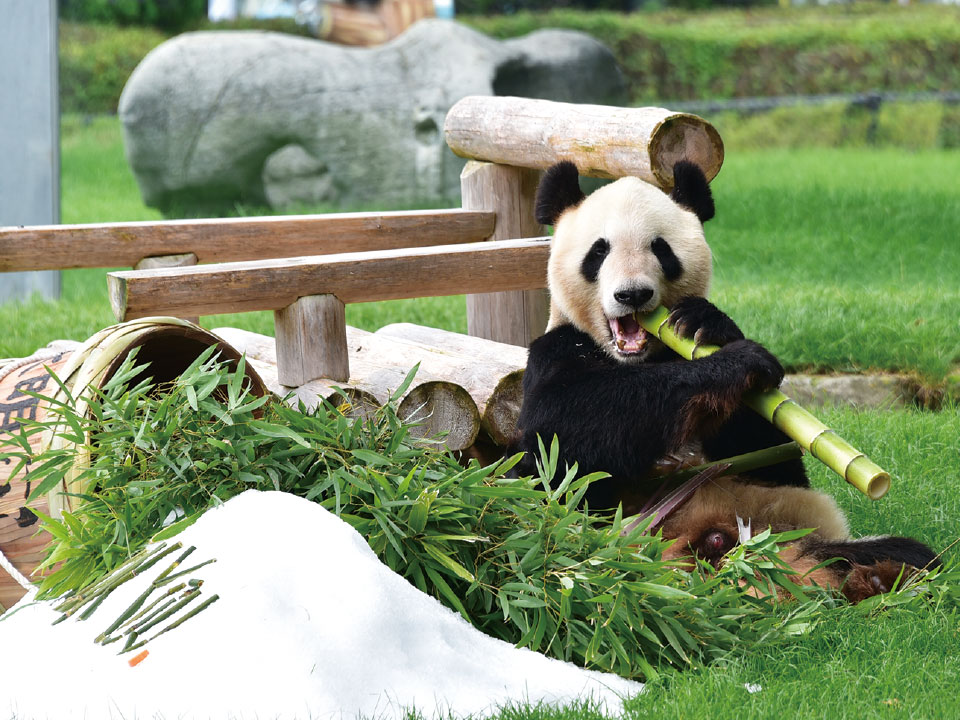
Male "Eimei" capable of natural mating
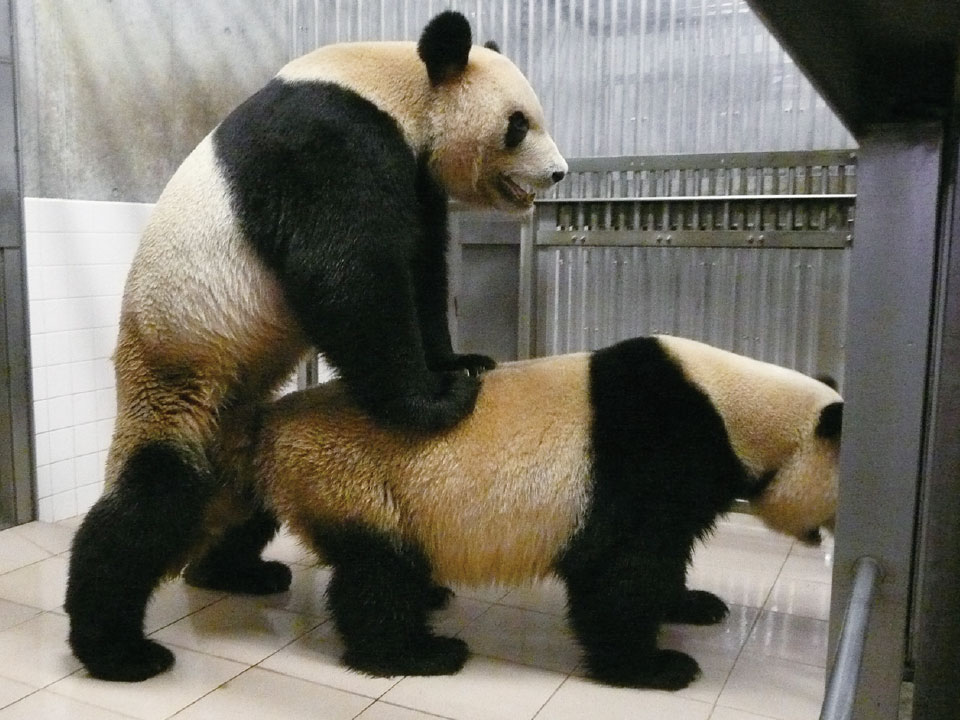
- Eimei" succeeded in a natural breeding at the age of 28
- In early 2000, the success rate of natural mating among males born in captivity was said to be very low, but "Eimei" came to the park at the age of 2 and became a valuable male that could be mated naturally. Although it is generally reported that the breeding age of males is up to 20 years old, Yongming had a baby in 2020 at the age of 28, maintaining his fertility despite his advanced age. 16 semen samples were collected between 2001 and 2010, and the semen quality of Yongming's semen was found to be the highest in Chengdu The semen samples were collected at the park and were almost as good as the semen collected at the Chengdu Giant Panda Breeding Research Base. In 2002, Yongming's semen was used for artificial insemination at the Chengdu Giant Panda Breeding Research Station, and a male was born in the same year. Thus, Yongming's semen contributes to the genetic diversity of pandas not only in the Park but also in the Chengdu Giant Panda Breeding and Research Station.
Breeding performance in China
- Pandas of our park's lineage active around the world
- On June 22, 2004, "Yuhama", the first panda born in Japan under the International Giant Panda Conservation Joint Project, was transported to the Chengdu Giant Panda Breeding and Research Station in accordance with the agreement. A total of 11 pandas born in the Park were then moved to China. According to the 2019 International Pedigree Registry, eight facilities, including our Park, have carried out breeding cubs to China, and we are the best-performing facility among them. The pandas shipped to China were incorporated into breeding programs in China. Of these, two males and two females were involved in breeding, resulting in more than 20 cubs. The cubs of "Xiongbin" have also participated in overseas breeding programs, and pandas from the Park's lineage are also active around the world.
